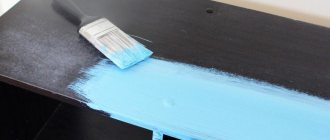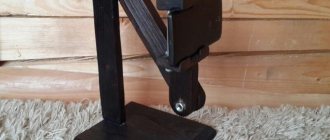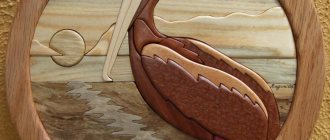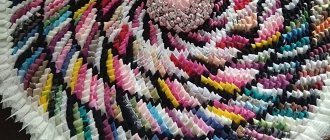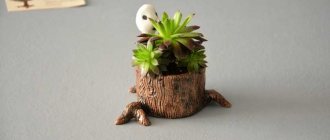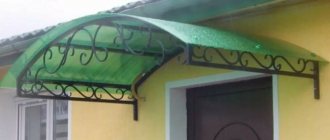Odorless solvents
The paint and varnish industry is now more developed than ever - you can find a huge number of types and subtypes of thinners and solvents on sale.
Despite all the practicality of white spirits and turpentines, they are quite toxic and have a characteristic odor. What to do if a person prefers a solvent for oil-based solvents? There are several options. Artists appreciated all the benefits of linseed oil - it is a good solvent for oil dyes. One of its properties is the almost complete absence of odor. However, there is also a minus - the paint takes a long time to dry. It is recommended to use “Tee” - an industrial mixture that also has virtually no odor. Well, the best odorless oil paint solvent is a composition from the Tikkurila brand. It is offered in clear plastic bottles with yellow lettering. This composition dries quickly and will last for a long time. The Diluent composition is also odorless, but in itself it is quite harmful.
For most people, at some point there comes a time when they are faced with the need to use oil paint for some purpose. But due to the fact that part of it remains unclaimed for a long time after use, the paint thickens or dries out. In such a situation, it can be diluted to working condition.
Turpentine and white spirit
Purified turpentine is a good option for large-scale paintings. Oil paints for painting become quite viscous and do not dry for a long time, and therefore you will always have the opportunity to make adjustments to the work. However, never use household turpentine, only from an art store. This substance can make the paint appear yellow. As for mineral white spirit, it dries much faster than the previous substance. In addition, it is less finicky in storage and safer in terms of chemical composition. And the price of such a thinner is lower. However, if the substance is of poor quality, a white coating may appear on the finished work after drying.
Types of drying oil in oil paints
One type of paint can be used to treat indoor surfaces, the other - strictly for external work, since it has toxic emissions (pungent odor).
The method of application depends on the type of drying oil:
- The first includes natural drying oil made from hemp, linseed, and soybean oil. It is marked MA-021, and is suitable for painting windows, doors and other room elements. The exception is the floor and ceiling, because the oil base does not allow moisture to pass through, thereby disrupting proper air exchange in the room.
- The second type is a composite drying oil, created by mixing solvent and oil. This drying oil is diluted with turpentine, white spirit, gasoline, solvent, it is characterized by the presence of a strong odor, and the fumes are harmful to the body. Although paint with a similar composition costs less, doing home repairs with it is contraindicated. Indicated by marker MA-025.
After reading the label and composition, choose either a drying oil based on linseed oil, or buy a suitable solvent.
"Thinner 647" for oil paints
This substance, which is a liquid with a pungent odor, is characteristic of this type of product. The solvent is a flammable, colorless liquid. This type is often used at home as a thinner for pentaphthalic and alkyd enamels.
They can also be used to dilute putty and varnishes. This product is also used as a degreaser for surfaces if they are planned to be painted in the future. Solvent 647 is often and thickly used to clean fabrics of dirt, as well as for washing various parts in industry.
Tee recipe
Experienced artists prefer to prepare their own thinner for oil paints, taking into account their needs. The most common “tee” recipe includes the following components:
- pictorial varnish (it is better to choose dammar or mastic);
- hemp, linseed or poppy oil (the latter is considered one of the most transparent and pure);
- turpentine or solvent for artistic oil paints (white spirit is most often used).
All components are mixed in a clean glass container in equal proportions. The container must be tightly closed, otherwise the solvent will begin to evaporate and lose its properties.
Solvent 647 for oil paints
Solvent 647 is a fairly strong, colorless chemical that is highly flammable and also emits a strong, unpleasant odor, which is quite typical for this type of solvent.
This liquid is often used to dilute alkyd enamels and pentaflathein enamels. They are often used to dilute varnishes or putty. The surfaces to be painted are first degreased with a solvent. Various industrial tools and parts are also washed with this liquid, and in addition, solvent 647 is used to clean contaminated fabric. When diluting paint, you should be extremely careful in its ratio of solvent, since if the amount of solvent is incorrect, the paint can easily be damaged. In diluted form, the paint is used for better penetration into the surface material. A mixture of paint and solvent is also used as a primer.
Mix it well for 10-20 minutes until smooth.
Table. Physico-chemical parameters of solvent 647.
| The name of indicators | Standard according to technical specifications |
| Ethyl ether volatility | 8 – 12 |
| Appearance | Homogeneous transparent liquid without mechanical impurities |
| Acid number, mg KOH/g, no more | 0,06 |
| Color | Not darker than the reference solution |
| Mass fraction of water according to Fischer, %, no more | 0,6 |
| Coagulation number, %, not less | 55 |
| Suitability for thinning nitro enamels | After drying, there should be no whitening of the film, which should have a smooth surface without dull spots. |
Mechanical method
This method is the most difficult. It takes a lot of physical strength to remove paint mechanically. But this method does not require as much money as the other 2 methods require. In this way, paint was removed from metal in those days when special compounds had not yet been invented.
Necessary items: sandpaper and any power tool. You can also use a sharp knife.
The process of removing the previous paint layer involves manually picking it out. Then the remaining debris should be washed off with water.
What are the disadvantages of the mechanical method?
- This is extremely hard physical work. The larger the surface to be treated, the more time and effort you will have to spend.
- There is a risk of damaging the surface.
- After finishing work, everything around will be covered in dust, which can negatively affect your health.
- The method does not work for many types of paint.
Despite the severity, people still wash off paint in this way, regardless of the size of the surface being treated.
Rules
To prevent the paint from deteriorating after adding thinner, you should follow these rules:
First you need to assess the condition of the coloring solution. After opening the jar, its contents are thoroughly stirred. Due to the fact that drying oil is heavier than coloring pigments, it settles at the bottom.
- It is necessary to determine in what ratio to add the thinner. Due to the heterogeneous composition of paints, there is no single standard, but the volume of the infused substance cannot be more than 5% of the total volume of paint. When diluting the dye with white spirit in order to use it as a primer or base layer, this figure increases to 10%. Before adding the diluent, you can do a test mixing in a glass, cup or other container. After determining the proportions, the solvent is poured directly into the paint can. It is better to do this in small portions, while simultaneously stirring the solution. This will make it more uniform.
- During the work process, after some time, the paint may thicken again. This is due to the evaporation of the solvent, a small amount of which will “revive” the paint again.
A number of difficulties arise when paint is left outdoors for a long time. To “return it to service”, you need to do the following:
- The film formed on the surface of the paint must be carefully removed. If you mix it, the liquid will become heterogeneous, with small lumps, which you will no longer be able to get rid of.
- In a separate container you need to mix a little kerosene and white spirit, pour the mixture into the paint, stir thoroughly. Just as with the initial stirring, it is better to pour the mixture in small portions so as not to spoil the paint.
- You can start painting, or wait for the kerosene to evaporate, and then carry out additional dilution with a small amount of white spirit.
First you need to assess the condition of the coloring solution. After opening the jar, its contents are thoroughly stirred. Due to the fact that drying oil is heavier than coloring pigments, it settles at the bottom.
A number of difficulties arise when paint is left outdoors for a long time. To “return it to service”, you need to do the following:
- The film formed on the surface of the paint must be carefully removed. If you mix it, the liquid will become heterogeneous, with small lumps, which you will no longer be able to get rid of.
- In a separate container you need to mix a little kerosene and white spirit, pour the mixture into the paint, stir thoroughly. Just as with the initial stirring, it is better to pour the mixture in small portions so as not to spoil the paint.
- You can start painting, or wait for the kerosene to evaporate, and then carry out additional dilution with a small amount of white spirit.
Additional Information
Binders are an essential component in the production of oil paints. These include oils that, when dry, form a protective film on the surface of the painting. Thanks to her, the paintings of great creators are preserved for centuries.
Thinners for oil paints are used to reduce the viscosity of paints during operation. Terpenes and white spirit are also used for painting.
Those who want to paint need to select the correct pigment number, find a good solvent, select high-quality brushes and treat them with care. Samples of foreign-made solvents are presented on the sales market. This gives the consumer the opportunity to have a wide choice of materials for diluting oil paints.
Oil paint dries on the brush, so it needs to be washed thoroughly when finished. Do not leave brushes in paint. It is important to dry a clean brush to prevent mixing of paints. Also, do not let the paint dry on your hands.
When using oil paints, you must follow the drawing sequence, the rules for using paints and caring for brushes. Paints must be properly prepared using the correct solvents.
Expert advice (2 videos)
Thinners
Thinner No. 1. , "Gamma". A mixture of turpentine and white spirit, taken in a 1:1 ratio. It is used for diluting sketch oil paints, relief pastes, washing off paints from canvases, palettes and washing brushes. Those. in less responsible jobs. Doesn't dissolve varnish.
Thinner No. 2 (white spirit). , "Gamma". "White Spirit", . Petroleum refining product, a fraction formed between heavy gasoline and kerosene
It should be used carefully, it has a high penetrating ability and can seep onto the back side of the canvas through microcracks in the ground. Used for washing paints off canvases, palettes and brushes
Not suitable for thinning varnishes.
It should be noted that when diluting artistic oil paints with white spirit and turpentine, the film of the paint layer darkens over time.
Thinner No. 3, . Low odor thinner. Odorless thinner. It is a well-purified white spirit. Makes paints more transparent, allowing for smooth transitions of tones. Improves paint flow and adhesion of paint layers. Dries quickly and does not turn yellow. Used for diluting oil paints, washing paints from canvases, palettes and washing brushes. Does not dilute varnishes. It should be noted that the absence of odor in this diluent does not reduce its toxicity
When working with it, you should follow the same precautions as when working with white spirit
Thinner No. 4 (pinene). , "Gamma". "Purified Essence of Turpentine", . From the Latin name of pine Pinus. Pinene is a component of turpentine and is obtained by purifying gum turpentine from resinous substances. Pinene oxidizes much less than turpentine, which is not recommended for use in painting due to its tendency to yellowing and tarring. When mixed with paints, it reduces their consistency. Pinene is used as a thinner for paints and varnishes in painting. When diluting paints with pinene, their gloss decreases and turns moderately yellow over time.
Thinner for artistic oil paints. . It is a mixture of bleached refined linseed oil and white spirit with the addition of a drier. Makes paints more transparent and less saturated, allowing smooth transitions of tones. Reduces drying time for oil paints. You can clean your brushes with it.
Thinner "Tee". . A classic composition that has long been used by many artists. It is a solution of compacted bleached refined linseed oil and dammar varnish in turpentine. Gives shine and bright rich tones. The thinner is used for diluting oil paints, and also as an intermediate layer to enhance the adhesion of paint layers. Do not use brushes or surfaces for cleaning.
Each component of this thinner is a thinner in itself. In addition, since linseed oil can cause shrinkage of the paint layer, especially the intermediate layer, many artists use not a “tee”, but a so-called “double”, which is not available in its pure form. This is dammar varnish mixed with a thinner such as pinene.
“Tee” is often prepared by yourself. To do this, take 1 part of dammar varnish, dilute it in 3 parts of pinene, then add 1 part of oil. It should be noted that these ratios are not mandatory, and every artist who has at least some experience will create his own “tee” according to his own taste and depending on the problem being solved. More pinene means the paint layer will dry faster and wilt more. More varnish is added to give the layer strength and less fading. And if there is more oil, then the paint will dry longer and will not be dry and dull.
Refined flaxseed oil is also sold separately. Used to dilute oil paints. Adding linseed oil to paint provides great benefits: the paint's spreadability and adhesion to the canvas and underlying layers of paint are significantly improved. Also, the paint becomes less concentrated, more transparent, bright, and shiny. Paint drying time slows down. As a result, you can work “raw” for longer and create glazes.
Condensed linseed oil No. 2 is characterized by a more moisture-resistant film and less tendency to yellowing. This oil is recommended for use in glazes, as it improves optical properties.
Criteria for choosing a solution for washing off old coating
To paint different objects, paints and varnishes on different bases are used:
- Water-based and water-dispersed dyes are water-based, so to wash them off you will definitely need quite a large amount of water;
- oil-based paints are dissolved with hydrocarbon solvents, in this case, to wash off, you will definitely need to contain alcohols, which will turn the solid substance into a semi-liquid state;
- nitro paints are dissolved only with solvents that contain acetone; as additional substances, the remover must contain an inhibitor (chemical reaction retardant), which will reduce the evaporation of the main solvent;
- polymer-based coatings can only be removed using strong alkalis or acids.
Each case requires a different type of solvent that will destroy the internal bonds in the layer of the old coating.
Important! It should be remembered that washes only destroy the layer. To completely remove it, additional mechanical removal will be required using spatulas, scrapers or other mechanical devices.
The presence of various properties of dyes requires in each case to be approached using a specific solution for removing paintwork.
Odorless solvents
The paint and varnish industry is now more developed than ever - you can find a huge number of types and subtypes of thinners and solvents on sale. Despite all the practicality of white spirits and turpentines, they are quite toxic and have a characteristic odor. What to do if a person prefers a solvent for oil-based solvents? There are several options. Artists appreciated all the benefits of linseed oil - it is a good solvent for oil dyes. One of its properties is the almost complete absence of odor. However, there is also a minus - the paint takes a long time to dry.
It is recommended to use “Tee” - an industrial mixture that also has virtually no odor. Well, the best odorless oil paint solvent is a composition from the Tikkurila brand. It is offered in clear plastic bottles with yellow lettering. This composition dries quickly and will last for a long time. The Diluent composition is also odorless, but in itself it is quite harmful.
To apply oil paint to a surface, sometimes it is necessary to obtain a more liquid consistency, so it becomes necessary to dilute the composition. This procedure will also be required in cases where the solution was left for some time in an unsealed container, which led to its hardening. To dilute the mixture, various substances are used, which are selected based on the purpose of the paint.
When choosing a solvent, pay attention to the purpose for which the paint is intended. The fact is that this type of material includes two large groups, divided by area of application:. 1
Solutions used for painting surfaces of residential or commercial premises. Traditional compositions, which are presented in abundance on the shelves of hardware stores, are suitable for these purposes. Although recently the demand for these products has decreased, in certain situations an oil solution can be the optimal solution
1. Solutions used for painting surfaces of residential or commercial premises.
Traditional compositions, which are presented in abundance on the shelves of hardware stores, are suitable for these purposes. Although recently the demand for these products has decreased, in certain situations an oil solution can be the optimal solution.
This mixture must be diluted in the following cases:
- The material is too thick.
- A base layer needs to be laid.
- Painting is done on wood. A composition that is not too thick fits well on such a base, otherwise it will not be possible to achieve strong adhesion.
In order to properly apply oil-based paint with a spray gun, it must first be diluted.
In addition, it often happens that after use some of the paint remains, which manages to dry even in a short period of time. This is what dilution is required for.
2. Artistic oil paints. They are great for amateur or professional drawing, as well as painting interior compositions
It is necessary to dilute such compositions with great care, so special diluents are selected for them.
Dilution procedure
No less important is the process of diluting the paint yourself, because its accurate implementation is the key to the absence of further problems.
Activities are carried out in the following order:
- The container of paint is opened, the thickness is assessed and thorough mixing is performed. To do this, use a handy tool or a prepared clean stick.
- The required proportion is determined. For each solvent, the indicator may be different. The exact amount of the substance depends on the thickness of the paint, but should not exceed 5% of the total mass. Although, if necessary, obtain a mixture for the base layer or primer of walls, the volume of white spirit and drying oil can reach up to 10%. To dilute the mixture in the best possible way, the thinner is added directly to the jar. It should be poured in gradually in small portions. This will allow you to restore the composition and mix it well.
- Next, the paint is poured into containers for use. During the painting process, the material may thicken, so you need to periodically mix the solvent.
It is more difficult to thin paint that has been left open for a while. Work order:
- The film that has formed on the surface due to exposure to oxygen is carefully removed. You cannot leave it or mix it, otherwise it will be impossible to completely get rid of hard lumps.
- A small amount of kerosene mixed with white spirit is poured into the container, everything is mixed well. If required, more thinner is added.
- Then you can paint with this mixture or wait until the kerosene evaporates and use only one component for dilution.
Important! The work is carried out in compliance with increased precautions, since oil paint and all substances used for dilution are flammable and toxic.
How can you dilute oil paint?
The choice of solvent primarily depends on the purpose and application of the composition. Based on this feature, paints are divided into 2 types:
- Construction materials used for interior and exterior decoration of residential and commercial premises.
- Artistic for painting.
For diluting construction paints, the following are used: special solvents (646, 650, 647, R-12, etc.), turpentine, white spirit, drying oil.
For artistic purposes, the following are often used as dilutions: varnishes, linseed oil, white spirit, pinene, double and tee.
To clean brushes and surfaces from dried paint, use gasoline and kerosene.
White Spirit
It is considered the most common and universal solvent used in the artistic and construction fields. It is used to dilute dried paint and wash brushes, palettes, and brushes. The substance can clean and degrease canvas or any other surface. The product dilutes well and evaporates quickly, but this disrupts the binding property of the material. Therefore, the layer turns out thin, matte and fragile. In addition, white spirit has a strong, unpleasant odor.
Turpentine
It is used in the construction industry and has a specific odor, so work must be carried out outdoors or in well-ventilated areas. It is used in the production of varnishes, rosin, dammar and various solvents for oil and alkyd-styrene products. The product is obtained by processing resin, tree resin and adding many other chemical components. Paint diluted with resin smells like pine resin and dries quickly.
Gasoline and kerosene
Used to dissolve dried materials and to clean brushes, things and various surfaces from dyes. The products belong to the category of highly flammable solutions, so all work must be carried out in compliance with fire safety standards and regulations.
Drying oil
It is one of the components of oil paints, therefore it helps to dilute dried material without losing its qualitatively important properties. When diluted, the drying oil settles downwards, so the product must be mixed well before application.
Lucky
Dammar, mastic and fir varnishes are most often used to dilute paints. They add rich colors and a glossy shine, helping to bring paintings to life. Works made on the basis of varnish dry faster, but the texture of the strokes is lost. These products are also used for glazing (creating translucent and transparent surfaces). They allow you to separate one layer of paint from another and give the coating additional strength.
Pinen
It is produced on a turpentine basis, but during the manufacturing process a discolored, odorless substance is obtained. The product effectively thins paints and dries quickly, which allows you to create a new layer without mixing with the previous one.
"Double" and "Tee"
Thinners “Double” and “Tee” are obtained by mixing several solutions. The first one contains oil and varnish, the second one additionally contains a solvent. The “tee” is most often used when working with oil-based materials and is considered the best option, which dries quickly, saturates the colors, and does not affect the strength and shiny film.
Linseed oil
The very first medium in painting that was used to dilute oil paints was linseed oil. It preserves the technical properties of the composition, improves color rendering, dries quickly and promotes the formation of a transparent dense film that protects the painting from external influences. The product is part of most modern paints, so it does not change their basic properties with additional dilution.
It is also used to care for canvas and natural bristle brushes. The oil gently removes dirt and makes brushes soft, smooth and flexible. If desired, it can be replaced with nut, hemp or poppy seed.
Artistic varnish
If you don’t know how to dilute oil paints, then try painting varnishes. But in no case should they be confused with top coats, which are applied about a year after painting. The varnish must contain wood resin and solvent.
Oil paints for painting, diluted in this way, become more pliable and at the same time denser, which ensures good coverage. In addition, the finished painting becomes bright and shiny, which is quite difficult to achieve using only oil or thinner. After drying, the paint becomes more durable and resistant to external influences.
To make the structure of oil paint softer, a so-called double is often used. It consists of one part varnish and two parts linseed or hemp oil.
Sunflower oil in painting
Sunflower oil is extracted from sunflower seeds. Sunflower oil was first pointed out as a material suitable for painting by Prof. F. Petrushevsky.
Raw sunflower oil, cold-pressed, has a light yellow color that fades more or less easily when exposed to light and heat. Its chemical composition has not yet been studied enough. Farion classifies sunflower oil as a semi-drying oil. This oil is of great interest to Russian painters, since it is mined mainly in the USSR, in large quantities, and is inexpensive. Recently, however, it has become interested in the West, where tests of its suitability in painting are also being carried out.
Sunflower oil contains 46% linoleic acids, 39% oleic acid and 9% solid fatty acids. These data on the composition of the oil are apparently close to the truth, as they are confirmed by the slow drying of sunflower oil. But while there is no firmly established data, further research on the composition of sunflower oil is, of course, necessary. Mixing paints with sunflower oil gave certainly satisfactory results.
From personal experience, I know that a layer of sunflower oil does not wrinkle when drying, even with its considerable thickness; The oil dries in a thin layer in the form of cobalt drying oil in approximately 12 hours. When resins and essential oils are introduced into it, it gives a normal layer of painting; In addition, it can serve as a binder for paints in combination with linseed oil, thereby moderating the negative aspects of linseed oil.
How to remove plaque from brass
To renew the appearance of small brass items, you need to use a detergent. To do this, place the item in a pan with water and detergent and leave to boil for several hours. Then pull out the product and use a nylon brush to remove the paint. After this, to protect it from rust, you need to wipe the product with a rag with wax.
Next, the metal is primed and becomes available for applying a new paint layer.
What to use for liquefaction
To dilute the dried color mixture, you should use a special thinner for. You can buy this product in stores selling painting and creative supplies.
You can also use drying oil. You will have to accurately measure the amount of the substance, since paint oversaturated with it will take too long to dry. The component must be added in small doses. Stir thoroughly during the process. When the required density is obtained, the composition is filtered through a fine sieve to remove lumps.
For artistic dyes, products based on solvents and tree resin can be used. When using such varnishes, the paint becomes more pliable and adheres more densely. The benefits are also brighter color and shine after drying. The hardened layer is durable and resistant to adverse environmental influences.
Pharmaceutical turpentine
One of the methods for diluting oil paints is to add turpentine. This substance, made from the resin of coniferous trees, has a characteristic pungent odor.
It can worsen a person’s condition and cause headaches. To avoid unwanted reactions, you need to work with the composition only in well-ventilated areas. If you use purified turpentine, the paint will dry faster.
Several types of composition are used for use with dyes.
Wood turpentine is of average quality. For its production, different parts of the tree are used: bark, branches.
Stump is made from stumps and other remains of coniferous trees. This option is of worse quality than others.
The best variety is considered to be turpentine turpentine. Only resins are used for its production. Thanks to this, the product consists almost entirely of essential oils. Paints diluted with this turpentine will retain the same quality.
Solvent-647
If the paint mixtures have dried out, you can use solvent No. 647 (option No. 646 contains acetone, so it cannot be used).
You will have to act with caution, accurately measuring the dosage. Excess solvent will deteriorate the properties of the paint. The substance smells bad and is flammable.
When using, it is necessary to mix it thoroughly with paints so that the mass is homogeneous.
The substance smells bad and is flammable. When using, it is necessary to thoroughly mix it with paints so that the mass is homogeneous.
White Spirit
This inexpensive and accessible product is often used to replace store-bought thinning compounds.
It is convenient to work with this substance. It evaporates more slowly than other solvents, allowing you to complete the job without haste.
In addition, the dye to which white spirit is added will not fade. You will have to buy purified, since plain one is not suitable for liquefaction.
Kerosene and gasoline
These substances can only be used in well-ventilated areas, since strong odors are toxic to humans
In addition, both substances are highly flammable, so it is important to avoid contact with ignition sources.
It is better to refuse to use such compositions if other diluent options are available. You can use kerosene or gasoline only in situations where paint is needed for exterior work.
The advantage of kerosene is its high liquefaction ability. With its help, you can bring even old, long-dried dye to the required thickness.
Paint drying time will increase when using kerosene. The substance is not used in its pure form. It will first have to be mixed with turpentine or driers.
If you use gasoline to reduce the viscosity, the mixture will become dull. Because of this, it is sometimes used for decorative purposes.
Turpentine
This thinner is made from the resin of coniferous trees using distillation. The following types of turpentine are produced by industry:
- gum: the most valuable, distillation is carried out using steam;
- wood, obtained by dry distillation; this method is only possible when using wood containing a high amount of resin;
- extraction: a product of volatile fractions evaporated with the help of organic solvents;
- sulfate: in fact, it is a waste obtained from the production of paper and cardboard, boiled in a solution of caustic and sulfur dioxide; the main reagent is sodium sulfate; Due to high toxicity, use in residential areas is not recommended.
Gum and wood turpentine dissolve perfectly, do not impart excessive dullness to the composition, and have a pleasant pine smell. It is also used as a solvent for oil-phthalic paints. Such compositions are absolutely non-toxic and can be used in residential areas.
